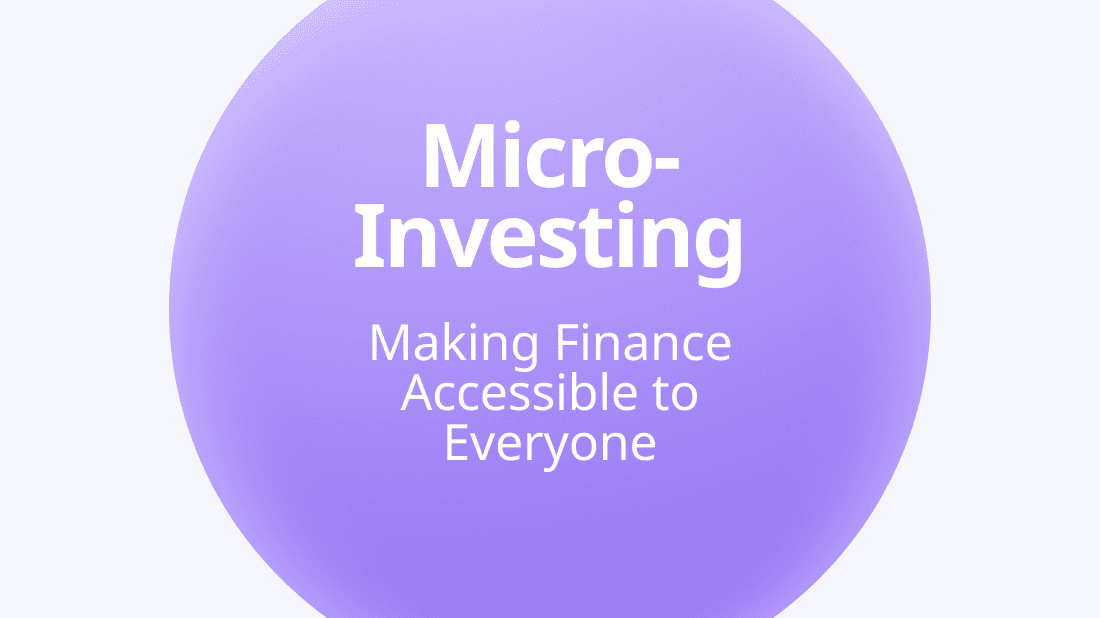If you’ve ever looked at your bank account and thought, “I wish I could invest, but I just don’t have enough money,” you’re not alone. That’s exactly where micro-investing comes in.
So, is micro-investing worth it for everyday people trying to grow their money without hundreds or thousands of dollars upfront?
In this guide, we’ll explore what micro investing is, how it works, and if it leads to real returns.
What Is Micro Investing?
Micro investing is a way to invest very small amounts of money—sometimes just a few cents or dollars—into stocks, ETFs, or other assets. You don’t need thousands in your bank account. Many micro-investing apps round up your everyday purchases and invest the difference.
Example:
You buy coffee for $2.40. The app rounds it to $3 and invests the extra $0.60. Do this 10 times a week, and you’ve passively invested $6 without even trying.
These platforms are beginner-friendly and automate most of the work. But still, one big question lingers in people’s minds.
Is Micro Investing Worth It?
Is micro-investing worth it if you’re just putting in spare change? Can you grow wealth with tiny contributions? The short answer is yes—but with realistic expectations.
Micro investing helps you:
Build a habit of investing early
Grow your money slowly through compound interest
Learn investing with low risk
But it’s not a get-rich-quick plan. It works best as a first step into personal finance, not your only investment strategy.
What Are the Benefits of Micro Investing?
People are turning to micro-investing because it removes the usual excuses like “I don’t have enough money” or “investing is too complicated.”
Here’s why it works:
Low barrier to entry: Start with $1 or less
Passive and automatic: Set it and forget it
Hands-on learning: See how markets work without risking a lot
Improves saving habits: Many apps double as budgeting tools
Boosts financial confidence: Makes investing feel accessible
Apps like Acorns, Stash, and Public are making it easier than ever to invest without needing to study the stock market for months.
Can You Make Money Micro Investing?
Yes, but how much depends on your investment amount, strategy, and timeline. Here’s a basic breakdown:
| Time Invested | Weekly Contribution | Estimated Annual Return (7%) | Total After 5 Years |
|---|---|---|---|
| 5 years | $10 | 7 percent compound | $2,900 |
| 5 years | $50 | 7 percent compound | $14,500 |
If you only invest pocket change, your returns will be small. But over time, it adds up. The real power is in building the habit, not just the return.
Micro Investing for Beginners: How to Start
If you’re brand new to investing, micro-investing is a great first step.
Simple steps to begin:
Choose a micro-investing app
Popular options: Acorns, Stash, Public, SoFi, BettermentLink your bank account or card
Most apps use round-ups or recurring depositsSet your risk level
Conservative to aggressive options based on your goalsLet it run
The app will invest for you automaticallyTrack and adjust
Review your portfolio and learn as you go
What Is the Meaning of Micro Investing?
Micro investing means putting very small amounts of money into the market, usually through a mobile app.
Unlike traditional investing, which often requires large capital, micro investing breaks it down into manageable pieces.
Example:
Instead of buying a full share of Tesla at $300, you buy a fraction of a share for just $5. You still benefit from growth, dividends, and ownership just on a smaller scale.
Is Microvest Legit?
MicroVest is not a typical micro-investing app. It’s a private investment fund that lends capital to microfinance institutions in developing countries.
While it’s a legit platform, it’s not for casual investors. It’s better suited for those looking to support impact investing or diversify larger portfolios.
If you’re searching for beginner apps, Acorns or Stash are more beginner-friendly.
How Does MicroVest Work?
MicroVest funds are used to support small businesses and entrepreneurs in emerging markets. Investors pool their money, which is then lent out to generate both financial returns and social impact.
You usually need to be an accredited investor to participate. So while it’s trustworthy, it may not align with typical micro-investing for beginners.
Are Micro Stocks Worth It?
There’s a common mix-up between micro-investing and micro stocks. Let’s clear that up.
Micro stocks:
Typically, stocks of very small companies
Often priced below $5 per share
High risk, low liquidity, and easily manipulated
These stocks can be tempting but are very risky. Unlike micro investing, which spreads your money into stable ETFs or fractional shares of big companies, micro stocks can be more like gambling.
So if you’re asking, “Are micro stocks worth it?”—only if you’re comfortable with high risk and know what you’re doing.
Is Micro Investing Safe?
Most micro-investing apps are registered with the SEC and insured by SIPC, which protects your funds up to a certain amount if the app fails (not if the market drops).
Safety tips:
Stick to well-known apps
Don’t invest money you’ll need in the short term
Start small and learn as you go
Overall, micro investing is relatively safe, especially for beginners.
Reddit’s Take: Is Micro Investing Worth It?
If you search “is micro investing worth it Reddit,” you’ll find mixed reviews:
Common themes:
Pros: Great for forming the habit, easy to use, feels good to be investing in something
Cons: Fees can eat into small returns, growth is slow, and may give a false sense of security
One user said:
“Acorns helped me start investing when I was broke. Now I use other platforms, but it got me started.”
It’s not perfect, but it’s a stepping stone. Many Redditors agree—just start. Even if it’s with a few cents.
Pros and Cons of Micro Investing
Let’s break it down clearly.
Pros:
Low commitment
Passive and automated
Encourages early investing
Easy to understand
Good for financial discipline
Cons:
Fees can be high relative to small investments
Slow growth
Not enough for long-term wealth alone
Some apps have limited control over your portfolio
Who Is Micro Investing Best For?
Micro investing is ideal for:
Students or low-income earners
People with spending habits they want to redirect
Anyone afraid of investing but curious to start
Folks who want to “set and forget” their savings
It may not be the best strategy for:
High-net-worth individuals
Experienced investors who want more control
People looking for fast returns
Micro Investing vs Traditional Investing
| Feature | Micro Investing | Traditional Investing |
|---|---|---|
| Minimum investment | Often less than $5 | Usually $100 or more |
| Risk level | Low to moderate | Varies widely |
| Management style | Automated | Self-directed or advisor-led |
| Ideal for | Beginners | Intermediate to advanced users |
| Expected returns | Moderate over time | Depends on strategy and assets |
You can always use micro-investing as a gateway to more traditional options.
Final Verdict: Is Micro Investing Worth It?
Yes, micro-investing is worth it if your goal is to start building wealth slowly, learn by doing, and form better financial habits. It’s not a shortcut to riches, but it’s a great long-term tool for beginners.
Think of it like brushing your teeth. You don’t see results instantly, but long-term, it pays off.
Takeaways
Micro investing lets you invest small amounts without stress
It builds strong money habits and grows slowly over time
It’s ideal for beginners or anyone starting with limited funds
Don’t expect overnight wealth, but do expect progress
Common Questions About Micro Investing
Can I start micro-investing with no money?
Most apps require at least $1 to start, but many offer promotions or round-ups that make it feel effortless.
Which app is best for micro-investing?
Acorns for automation
Stash for educational features
Public for fractional shares and social investing
Is micro-investing worth it long term?
Yes, especially when paired with increased contributions over time and a goal to move toward more diverse investments.








